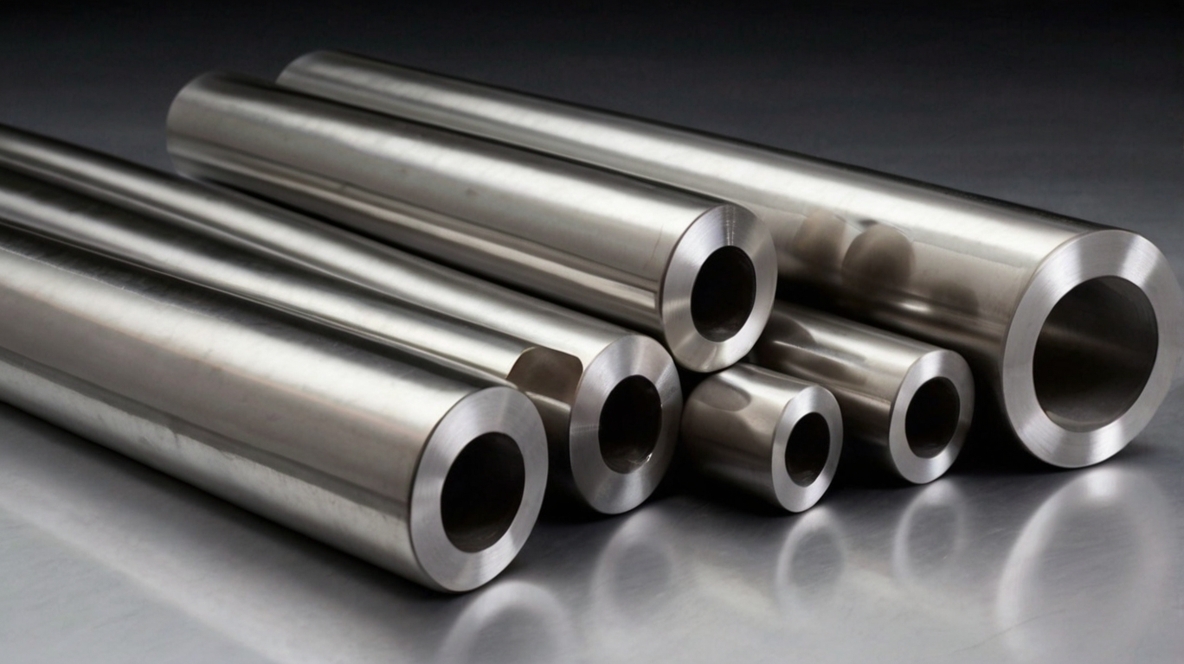Advantages of Precision Machined Stainless Steel Hollow Bar
Using Precision Machined Stainless Steel Hollow Bar offers significant advantages in manufacturing components requiring tight tolerances and specific surface characteristics. Starting with a hollow bar, as opposed to solid bar, inherently reduces material cost and initial machining time required to remove core material. When this hollow bar is further precision machined by the supplier or a specialist, it provides a near-net shape component blank.


Precision machining processes applied to hollow bars can include:
- Turning/Boring: Achieving highly accurate outer diameters (OD) and inner diameters (ID) with excellent roundness and cylindricity.
- Honing/Skiving & Roller Burnishing: Producing exceptionally smooth and precise internal surface finishes, critical for hydraulic/pneumatic cylinders and bearing applications.
- Centerless Grinding: Providing very tight tolerances and fine finishes on the outer diameter.
- Drilling/Tapping/Milling: Adding features like holes, threads, or slots as per component design.
The key benefit is consistent quality and dimensional accuracy, reducing scrap rates and simplifying final component manufacturing. Applications for precision machined stainless steel hollow bar include hydraulic cylinder barrels, high-pressure fittings, bushings, spacers, bearing housings, and various components in the automotive, aerospace, and medical device industries where precision and material integrity are crucial. Specifying a Precision Machined Stainless Steel Hollow Bar ensures components meet demanding performance requirements.
Typical Achievable Tolerances/Finishes:
| Machining Process | Parameter | Typical Achievable Range |
|---|---|---|
| Turning/Boring | Diameter Tolerance | IT7 – IT9 (ISO 286) |
| Surface Roughness (Ra) | 0.8 – 3.2 碌m | |
| Honing | Surface Roughness (Ra) | 0.1 – 0.4 碌m |
| Skiving & Roller Burnishing | Surface Roughness (Ra) | 0.1 – 0.4 碌m |
| Centerless Grinding (OD) | Diameter Tolerance | IT6 – IT8 |
“`
Advantages of Precision Machined Stainless Steel Hollow Bar — This article provides a practical buyer‑focused overview with specifications, selection tips, and on‑site considerations. Explore related topics: blog.
Key Specifications and Standards
- Standards: ASTM / EN / JIS (e.g., ASTM A240/A36, EN 10088/10025, JIS G4304/G3131).
- Surface options: 2B, BA, No.4, HL, mirror; galvanized (electro / hot‑dip).
- Processing: hot‑rolled, cold‑rolled, annealed & pickled, welded or seamless.
- Typical services: slitting, shearing, cut‑to‑length, drilling, beveling, deburring.
- Documentation: MTC, CO, packing list with net/gross weight and heat numbers.
Typical Applications
Construction, machinery, automotive, energy, enclosures and fencing, food equipment (for stainless), and general fabrication. Match grade and finish to corrosion, strength, and appearance requirements.
Selection Guide
- Use certified material with Mill Test Certificate (MTC).
- Confirm standards (ASTM/EN/JIS) and tolerances per drawing.
- Match surface finish to application (2B/BA/No.4/galvanized).
- Specify dimensions and acceptable deviation upfront.
- Plan packaging and corrosion protection for transit.
Processing, Packaging and Logistics
We adopt edge protection, waterproof wrapping, rust‑inhibiting paper, fumigated pallets, and strapping suitable for sea freight. Loading photos and weight lists are provided for each shipment.
FAQs
Q: What lead time can I expect?
A: Typically 7–15 days ex‑works for standard sizes; custom processing may extend the schedule.
Q: Can you provide cut‑to‑size service?
A: Yes. We slit, shear, cut, drill, bevel and deburr to drawing to reduce waste and speed installation.
Q: How do you ensure quality?
A: Incoming inspection, process control, and final inspection with traceable heat numbers; third‑party inspection is available.
Q: Do you support small trial orders?
A: We support pilot quantities with consolidated shipping to control cost.
All values are typical and for guidance only; confirm with the datasheet and purchase order before production.
Related products: view details.
Related products: view details.



